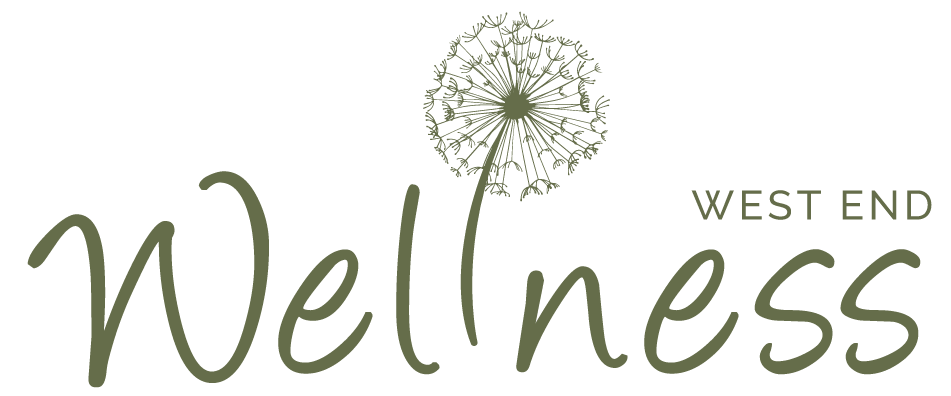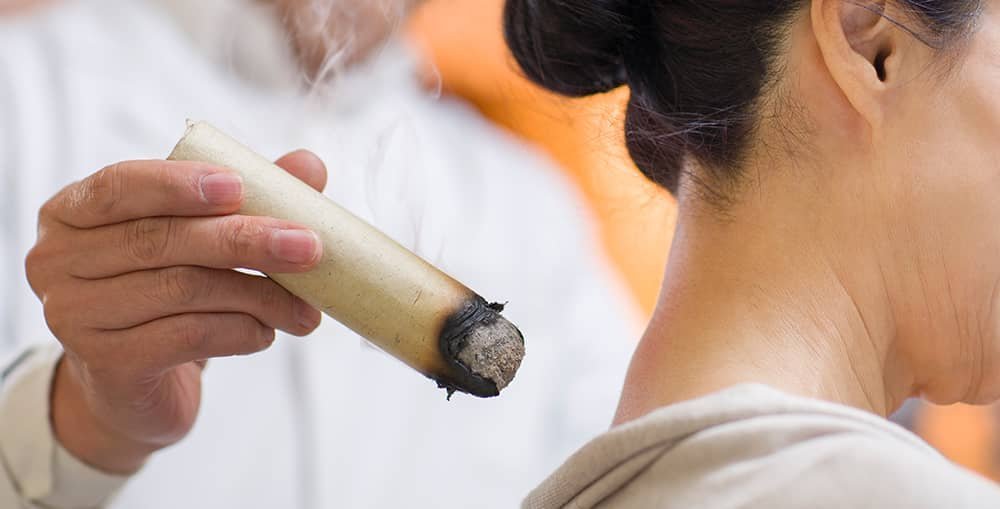What is Moxibustion And The Healing Powers of Moxa?
Table of Contents Show
Quick Summary
Moxibustion, a traditional Chinese medicine technique, uses heat from burning dried mugwort to stimulate healing and improve balance in the body. This article explores what moxibustion is, how it works, and its potential benefits for conditions like chronic pain, digestive issues, and stress relief.
Discover answers to common questions about this fascinating therapy, such as its safety, effectiveness, and how it complements acupuncture. Whether you’re curious or considering it as a treatment, this guide provides everything you need to know about this powerful, holistic approach to wellness.
Moxibustion is one of those intriguing therapies that spark curiosity when people first hear about it.
At West End Wellness, clients often ask, “What is moxibustion, and how does it work?” or “Can it really help with my condition?”
This ancient technique, rooted in traditional Chinese medicine, involves using heat and herbal energy to promote healing, balance, and well-being. While it’s often used alongside acupuncture, moxibustion stands out as a unique and effective therapy for a wide range of ailments, from chronic pain to digestive issues.
In this article, we’ll answer some of the most common questions we hear in our clinic, providing an easy-to-understand overview of how moxibustion works, its benefits, and why it remains a trusted option in holistic care.
If you’re curious about this age-old practice or consider it part of your wellness journey, we invite you to read on and learn more!
What Is Moxibustion?
Moxibustion acupuncture is a traditional Chinese medicine therapy technique involving mugwort burning, known as moxa. The purpose of moxibustion is to stimulate the flow of Qi (pronounced chee), strengthen the blood and maintain general health. Qi is translated as life energy.
Moxibustion can provide many benefits because it generates heat. The first advantage of moxibustion is that it can increase a person's temperature. People with autoimmune illnesses, weak immune systems, and blood circulation issues are typically chilly. The warming properties of moxa make it a brilliant therapy for these illnesses.
Moxibustion therapy is also a good choice for those whose jobs are known to aggravate their physical ailments. The warmth of moxa can be essential in bringing great relief to those afflicted with physical ailments.
This pleasant heating sensation penetrates the skin, which increases blood flow and allows oxygen to flow more readily to the tissues, muscles, and tendons that are particularly affected.
Types Of Moxibustion
Moxibustion can be performed either directly or indirectly. Below, we will share the different types of moxibustion and what experience you may have with them.
-
Simplified burning of a small amount of moxa is directly applied to certain acupuncture points on the body. This procedure can either result in scarring or non-scarring. If scarification is performed with direct scaritation, the moxibustion is ignited and left to burn out, causing scar tissue and blisters to appear on the skin after healing.
With a direct, non-scarring method, moxa is extinguished or removed, and it will not continue to burn the skin. Both methods, however, result in a healing sensation reaching through the skin, although some traditional advocates of this therapy believe that the scarring method is more effective. -
The indirect moxa is the more popular option since it is safer and easier to administer than the direct method. It is performed by holding a burning moxa stick over the countertop without directly touching it while it stays in place for several minutes until some redness is observed.
On the other hand, another variation of the indirect method is the moxa stick is attached to an acupuncture needle. -
This is a comparatively recent type of moxibustion. It is performed by putting loose moxa on a burnable cardboard strip and lighting it before using it on the moxa points.
-
This is what one does once put salt on the patient's belly button, kneading some moxa wool into a cone and putting it on the salt. The needle size of the moxa wool is different from the condition of the problem.
What Is Mugwort?
Mugwort, or artemisia, is a plant in the family Compositae, and it is used in making various dishes, such as Volksgruss (German Christmas goose), Jinchangui Jjimchi (Korean clam soup), and kusazuke (a Japanese dessert).
Mugwort, also called moxa, is the key element. Mugwort leaves are dried and ground into small pieces, called moxa (similar to incense), which are lit and used to warm the running points of your body and relieve specific conditions.
Moxibustion utilizes the 12 major meridians to circulate qi and boost blood, helping to foster general health and prevent disease. It has the aptitude to warm cold yang and clear cold pathogens to maintain overall wellness. In Traditional Chinese Medicine, the concept of yin and yang balance each other, but imbalances may result in disease.
How Is Moxibustion Used?
Direct moxibustion is when a licensed physician lets you let out moxa in the shape of cones onto your skin. In the United States, indirect moxibustion is more widespread, where the burning moxa does not directly touch your skin.
Place the moxa about 1 inch away from your skin.
Place the moxa on top of acupuncture needles, shepherding the warmth through your body straight into the needles.
Before placing it on your skin, place the moxa on top of another therapeutic material, such as ginger, salt or a bamboo moxa box.
What Is Moxibustion Used For?
Moxibustion tends to be beneficial in cases where the disease results from cold pathogens or a qi yang deficiency. This encompasses:
Joint pain.
Indigestion.
Organ prolapse.
Gastrointestinal issues.
Menstrual cramps.
Acute and Chronic pain
Sleep issues
Headaches and migraines
Stress / Anxiety
Infertility.
It is also often used to correct breech positioning during maternity when a newborn is inserted feet- or bottom-first inside the uterus instead of head-first. Moxibustion has proved to be an efficient method to facilitate a baby's turn from becoming breech without needing to seek medical assistance.
Are There Any Risks Of Moxibustion?
The use of moxibustion is well-documented in Chinese medicine and encourages attested use. Nevertheless, not all persons are positive users, and its use entails risks that should be carefully considered. Burning moxa doesn’t have any alarming risks, and direct moxa therapy could include burns, which may lead to scalding, scarring and skin discoloration.
If you are pregnant, tell your acupuncturist before your first treatment so they can avoid using moxibustion with you, if possible. Also, let your acupuncturist avoid moxibustion for you if you have:
A mugwort allergy.
Smoke sensitivity.
A lung condition, such as asthma.
Who Should I Go See For Moxibustion?
Moxibustion is among the most commonly applied fire therapies to dispel cold stagnation and its related ailments. Common disorders that often arise from a Western healthcare perspective can loosely be considered to be linked with cold stagnation, are as follows:
Using moxibustion with acupuncture is commonly used alongside one another, and when performed correctly, it can help increase its effectiveness as it has the ability to penetrate the 12 meridians.
What Are The Benefits Of Moxibustion?
When receiving moxibustion, there are multiple benefits that a patient may experience. In most cases, a patient should feel a pleasant heating sensation and, along with the scent, create a nice feeling of relaxation while on the treatment bed. Other benefits include:
-
According to traditional Chinese medicine (TCM), as the body is currently of the "cold type," many acupuncture channels may lodge therein once cold forms in the body. This can result in pain in a particular location that often feels worse in cold weather and better when heated. Common examples of a cold-related disease are arthritis.
-
Moxa promotes blood circulation and qi, so it may be helpful for pain, which occurs when blood or qi stagnates. It's especially popular in gynecology for individuals experiencing menstrual cramps, and it has been used for some time to heal bruises faster.
-
We also use moxa to stimulate particular acupuncture points, such as the little toe that's helpful to turn a breech baby. Certain points on the body are unsuitable for needling, such as the umbilicus, which is helpful for some digestive disorders.
-
Moxa therapy has been shown to increase immune function, improve white blood cells, increase anti-inflammatory cytokines and antibody production, and enhance your immunity. Not only will it help you when you are feeling depressed, but it can also help fight illnesses where the immune system is compromised.
Common Questions About Moxibustion
Q. Can Moxibustion hurt?
Depending on the moxibustion process, the source of your moxibustion pain largely depends on how you are treated. With a "direct" treatment approach, the moxa will essentially burn itself out before removal, resulting in blisters and scarring at the treatment site. The pain you experience as a result can be uncomfortable and uncomfortable.
Indirect moxibustion uses a method that does not touch your skin, so this method of inserting heat doesn't cause pain. Most people find this inserting heat relaxing because the skin isn't touched. Many rheumatologists use the indirect method due to its lower risk of pain and burning.
Q. How does Moxibustion feel?
For most patients, moxibustion feels like a flood of heat down the craftsmanship line where the process has been directed. The heat may be able to radiate through the Jing Luo meridian the practitioner uses. Should you feel this, it's normal and the desired outcome. Building up blood circulation.
For some patients, moxibustion treatment is a pleasantly relaxing and soothing experience. However, some patients are uncomfortable with mugwort's bright and pungent smell.
Q. Is there a smell that comes with Moxibustion burning?
Moxibustion involves burning; as it’s used, it will produce smoke and cause a strong, pungent odour. While the moxa, made from mugwort, is still burned and emits a lot of smoke, it is an excellent choice. TCM clinics use good ventilation and air cleaners, so it is not a problem.
Q. Can I do Moxa to myself?
Moxibustion is also a medical practice in traditional Chinese medicine. Confirming with a skilled physician is vital, like in other medical specialties. Because of this, it is best to stick to getting your treatments with an acupuncturist or medical professional qualified to perform moxibustion.
Final Thoughts
Like acupuncture, applying “moxa has been known for its safety and effectiveness. The use of moxibustion to treat various health issues has been important in Chinese traditional medicine for thousands of years. Its blood-targeting therapies are known to impact health significantly.
Moxibustion is a terrific choice for alternative therapies that almost anyone may use.
Moxibustion alongside acupuncture may benefit people who have not obtained success from other treatments. Therefore, it is highly recommended for those who have not yet experienced adequate total recovery from various health issues following conventional and holistic therapies.
Hopefully, after several treatments, a patient should begin to feel the effect of moxibustion and how acupuncture and moxibustion complement one another.
If you have any further doubts or questions regarding this subject or another treatment, contact one of our experienced Acupuncturists or Registered Massage Therapists here at West End Wellness Clinic. You can either give us a call or make an appointment.
Disclaimer: Please remember this article is for informational purposes only and should not replace professional medical advice. Please consult a healthcare provider or someone with the correct qualifications before starting any new exercise or treatment program.




